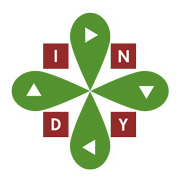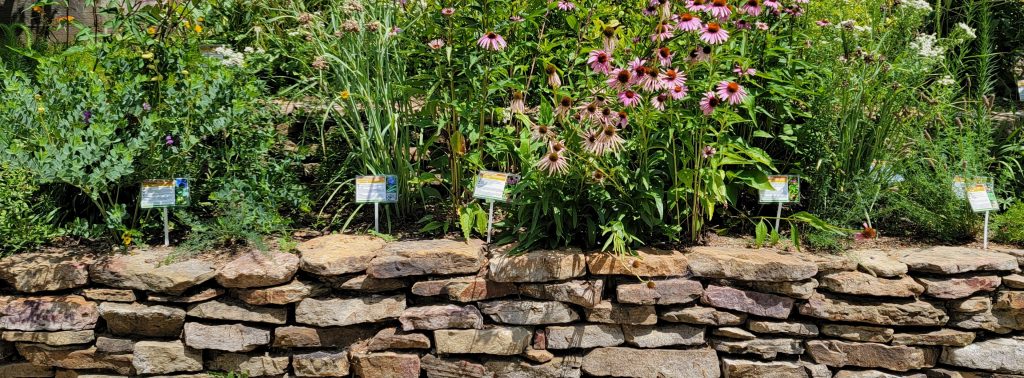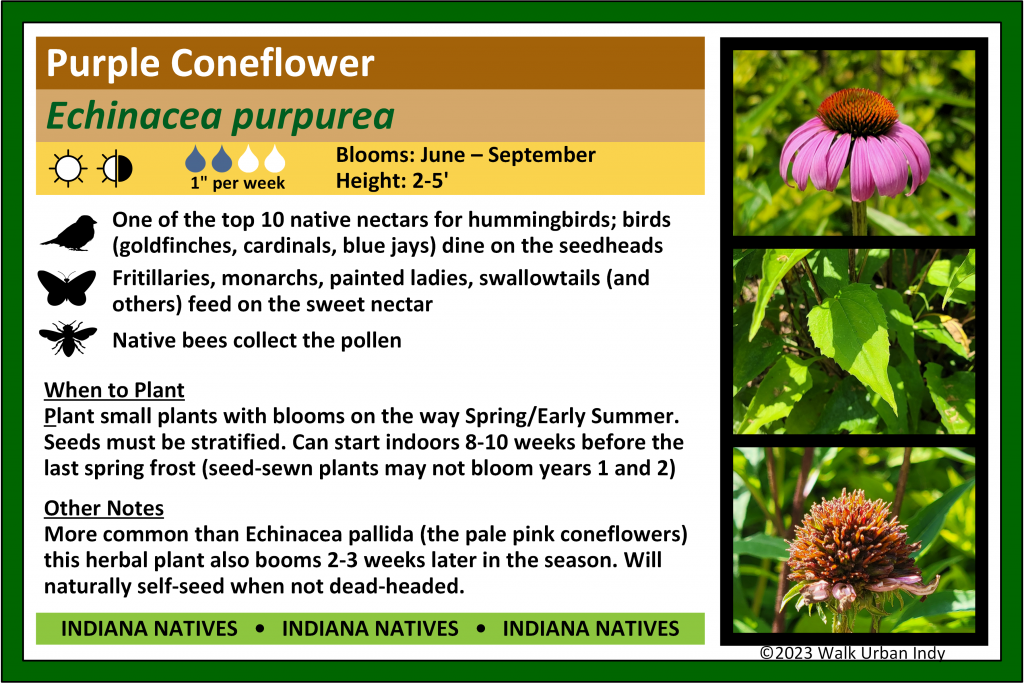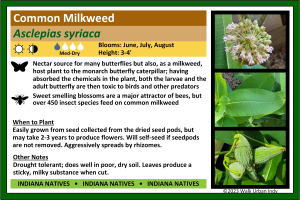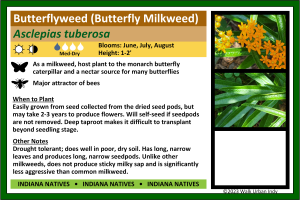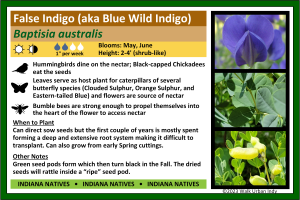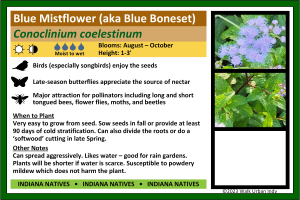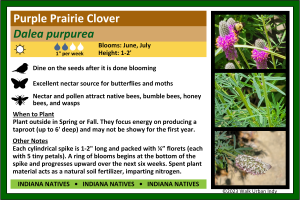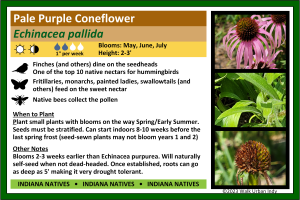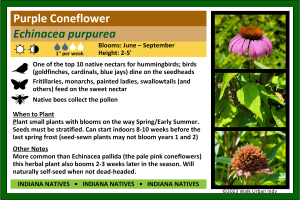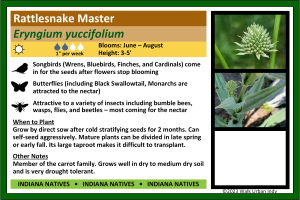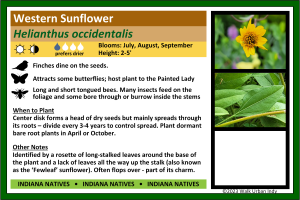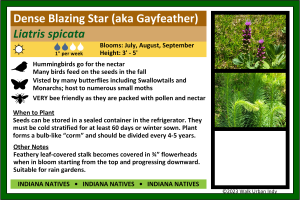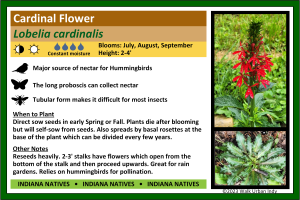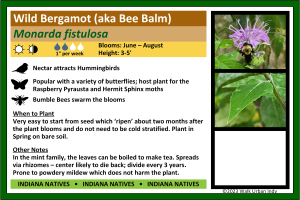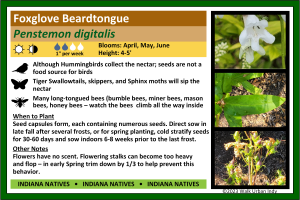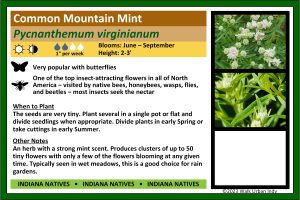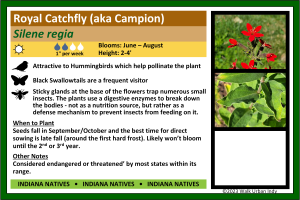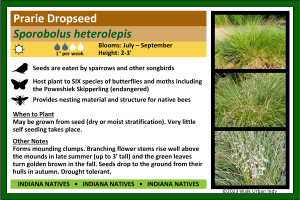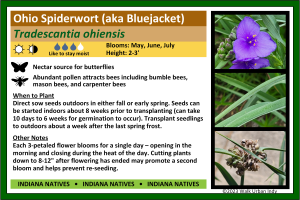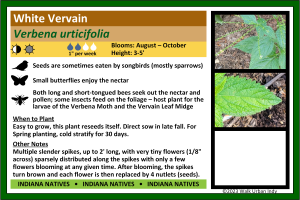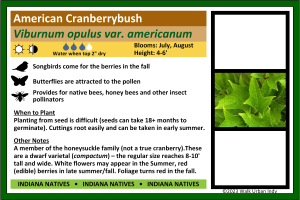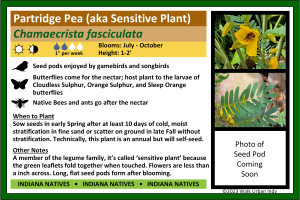Promoting Indiana Native Plants
There are many reasons why landscaping with plants native to your area is beneficial. A fundamental one is that local ‘fauna’ – the birds, insects, and critters native to your area – rely heavily on native plants as a food source (or host plant!). Mentally and physically, in order to be healthy yourself, you need a healthy, well-balanced, environment. When you walk in your neighborhood, we hope you have a chance to observe and enjoy some Indiana native plants and we want to do our part to help make that happen.
Planting Indiana Natives? Let us help you educate passers by!
If you are planting Indiana native plants, Walk Urban Indy wants to assist you in educating people who pass by/through your plantings. In that vein, we have initiated a pilot program to provide downloadable signage for Indiana native plants.
Click here to go directly to the table of currently available signs.
Free to Use!
These plant signs are FREE FOR YOUR USE however, they are under copyright and we do ask that you not modify them in any way. If you want to make a small donation to our cause in appreciation, we won’t turn you down!
This is a Pilot Program
Please note that this is a pilot program begun in July of 2023. We have started with just 20 common native plants and hope to build our signage library as we go along – WITH YOUR HELP! Our sign size, font size, photo size, icons, etc. are what we think will work, but may end up being tweaked over time. We also need to assess whether the method of laminating photos will hold up under direct sunlight.
What is on a Walk Urban Indy Native Plant Sign
Each sign is designed to be printed as a 4×6 photo, laminated, and attached to a garden marker that goes into the ground. The information on the signs is obtained through a combination of internet research and our own personal experience here in central Indiana. We are COMPLETELY open to suggestions/corrections as to the content of the signs.
Each sign (typically) contains:
- Common Name at the top
- Scientific Name
- Sunlight requirements (if more than one symbol shown, the first is the main preference)
- Water needs
- When the plant blooms in Central Indiana – we are taking this mostly from our personal experience
- Typical plant height (actual height will depend upon a variety of factors)
- Information on when/how to plant
- Other notes which can include interesting factoids
- Three photos: flower, leaves, and seed head/pod
** Some signs may be missing one or more of the photos until such time as our photographer gets a chance to capture that aspect of the plant. A very few of the photos were obtained under creative common license – the vast majority were taken by our photographer and are included under the Walk Urban Indy copyright.
Click here for the list of materials/assembly methods WE used in our pilot program.
Currently Available Signs (for download)
Clicking on each of the photos in the table will bring up the full-res version for you to right-click and save locally.
Don’t see the plant you are looking for? Click here for information on how we can build this library together.
Materials/Methods for Making/Assembling the Signs
Click here to return to the table of currently available signs.
Materials
The following materials were used when we made our first batch of signs as part of the pilot. You are, of course, welcome to use different materials/methods.
Using the materials listed below, with tax, they come out to about $1.30 per sign (our photo prints cost us $0.38 each).
- Lamination Pouches: TYH Supplies 100-Pack 4 x 6 Inch 5 Mil Clear Hot Glossy Thermal Laminating Pouches. $16 for 100 pouches (you will need a Laminator – you can get a decent one for around $30).
- Garden Markers: Kinglake Garden Outdoor Plastic Plant Labels (11.8″). $15 for 30 stakes. Heads up: these are a bit ‘bendy’ – I’m looking at the metal ones with two legs – trying to find ones where the legs don’t rust in the ground. They are more expensive though, so there is that.
- Hook and Loop Mounting Squares. We used VELCRO Brand 7/8″ White hook and loop squares (30705). $13 for 200 squares (2 squares per sign)
Assembly
- DOWNLOAD: Click on a thumbnail in the table then right click on the full photo that comes up and select ‘Save Image As’ to save the file locally. Use your browser’s back button to return to this page.
- PRINT each sign as a 4×6 photo. You can use your own photo printer if you have one available or upload to a local print shop (we used Walgreens Photo).
- LAMINATE each sign.
- AFFIX each sign to a garden marker. We used two hook and loop squares per marker so that we could easily update/replace signs as needed. The ‘loop’ part is on the card while the ‘hook’ part is on the marker. Alternatively you could use some sort of weather-resistant glue.
Building the Plant Signage Library – Together!
Click here to return to the table of currently available signs.
As mentioned, this is a pilot program. We would love to expand the library but we are just volunteers and we are going to need your help to do it. The key requirements to create a new plant sign are:
- Plant information: this is relatively easy to obtain and we are happy to do the research if you are unable to (it just may take us a bit longer). We will need you to provide the scientific name at a bare minimum. If you have specific information you would like included in the ‘Other Notes’ section, please provide it and we will give it serious consideration. Note that we are ONLY doing signage for plants that are native to Indiana. We will use the Bonap website to verify this before proceeding.
- Photographs: Ideally you will be able to provide the three photos necessary: bloom, leaf, seed head/pod. Photos should be high resolution, in a landscape format and will be cropped and/or recolored as necessary. Any photos provided must come with a signed photo release from the photographer (or parent/legal guardian if photographer is under the age of 18) so that Walk Urban Indy can place them on our (copyrighted) plant signage and make them available (for free) to the public.
If there is enough interest, we will likely come up with an automated system for making new signs happen. For now, please just reach out to us using our contact form (bottom of the About Us menu) or send an email (below).
Email: info@walkurbanindy.org